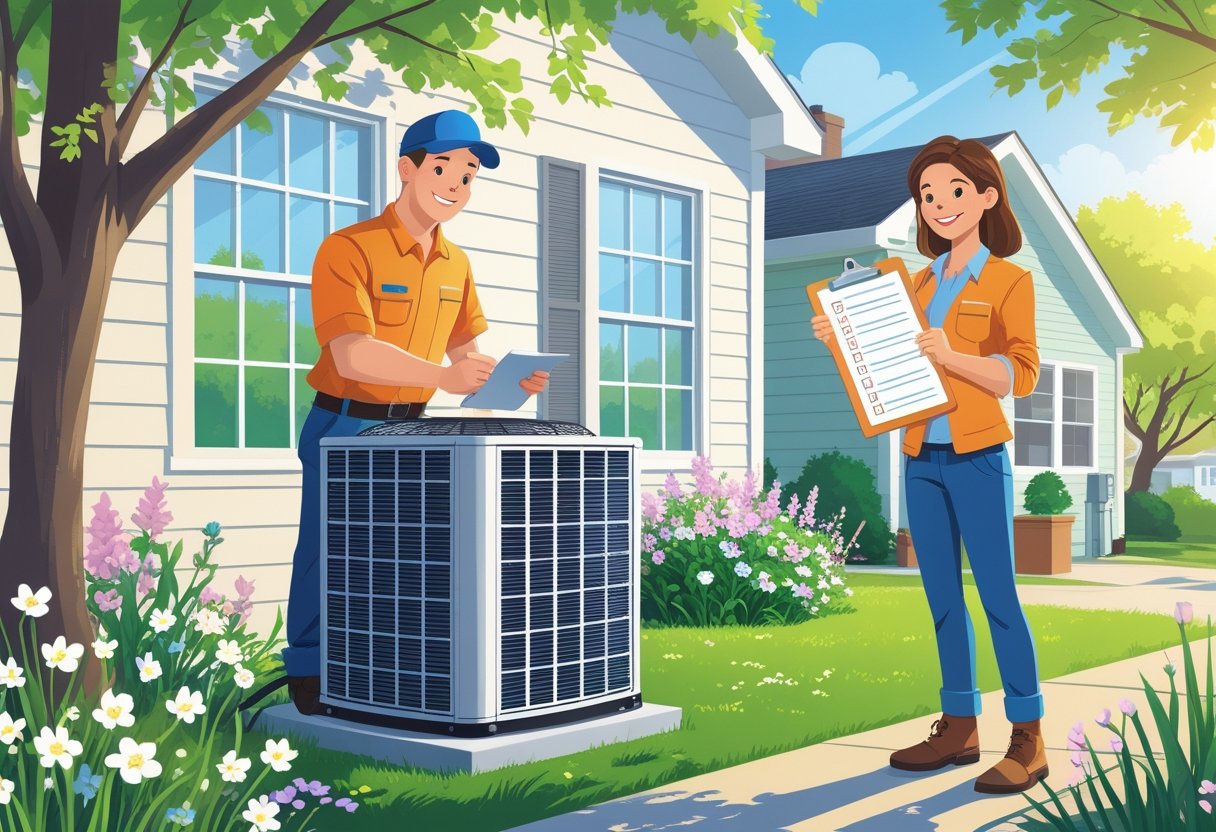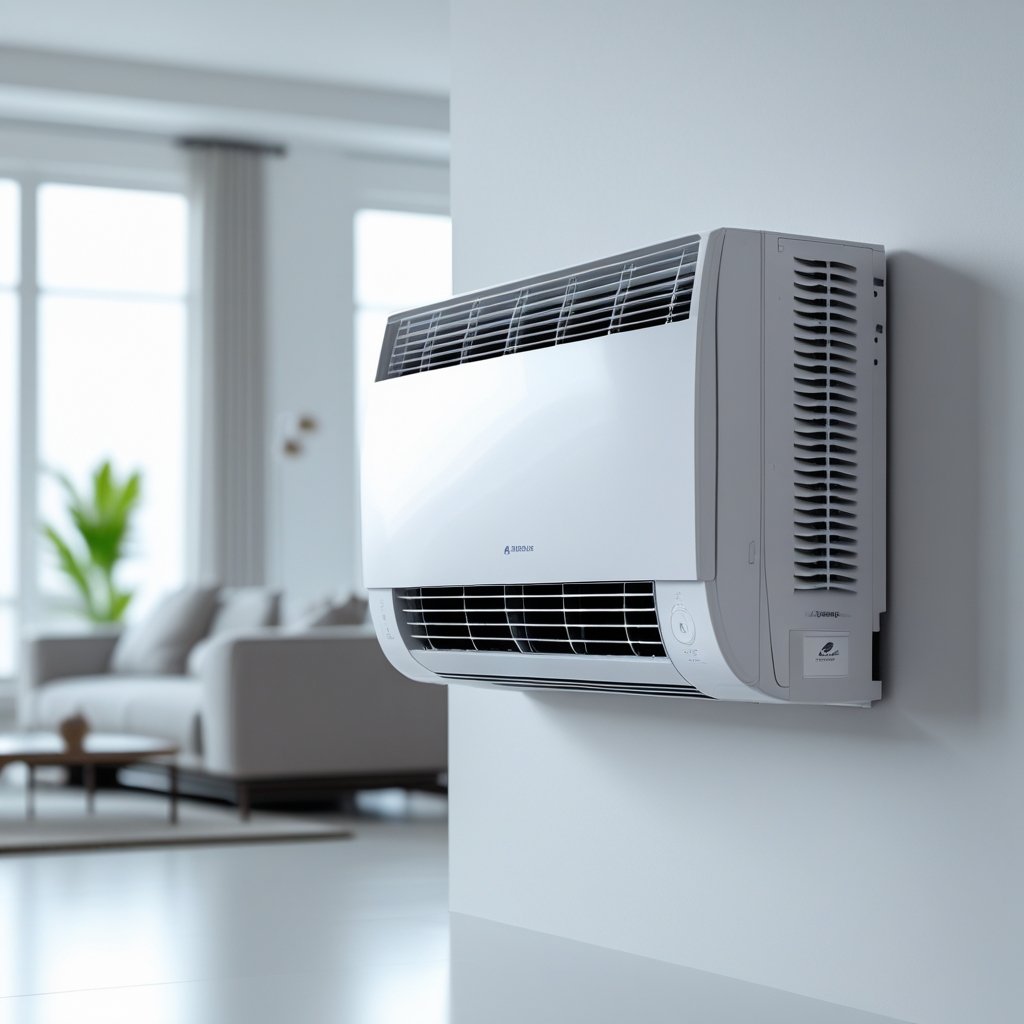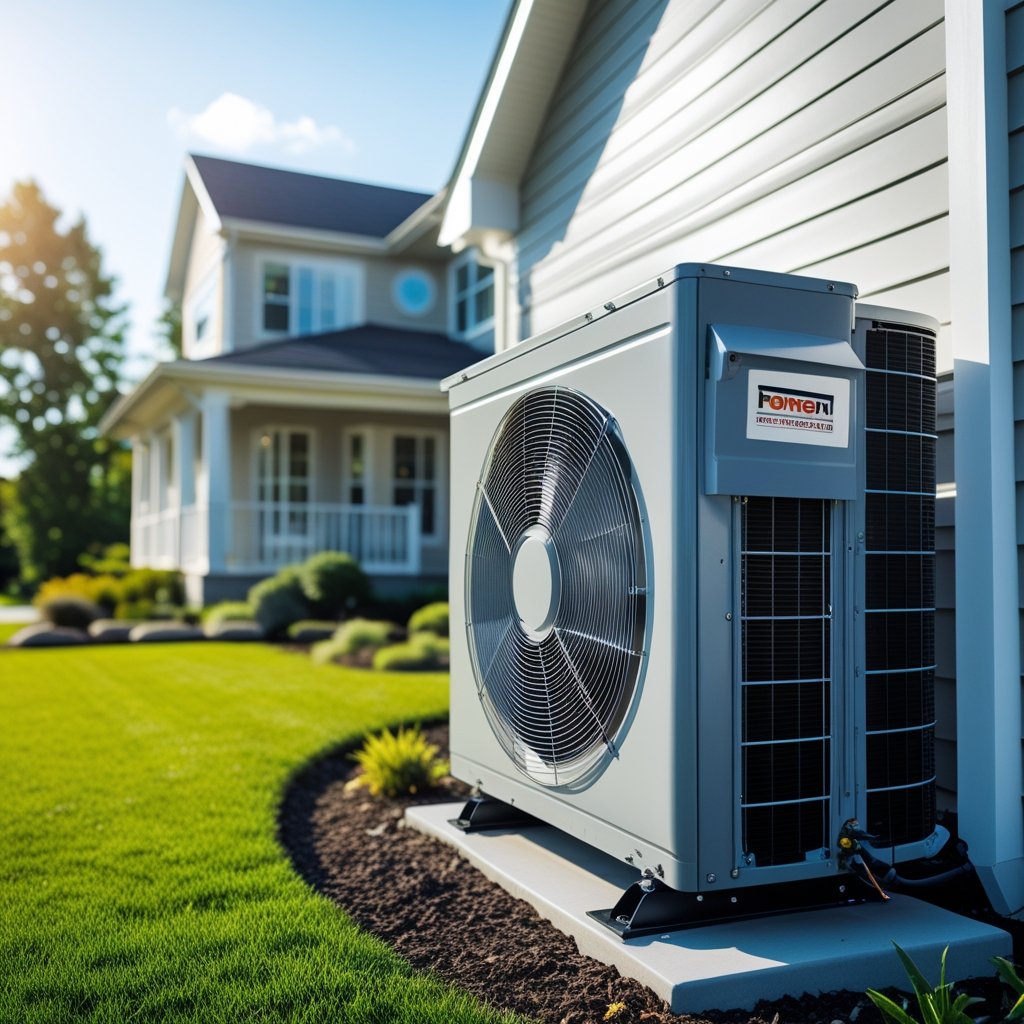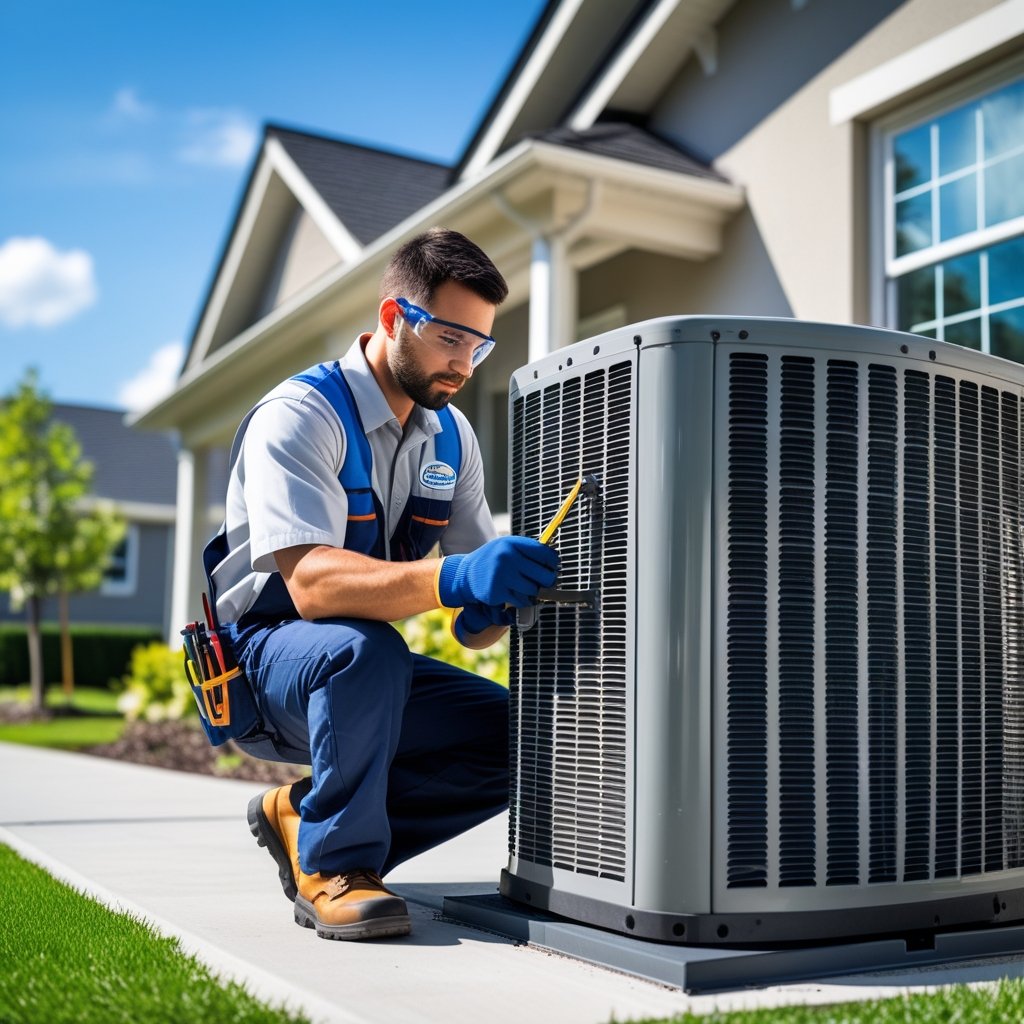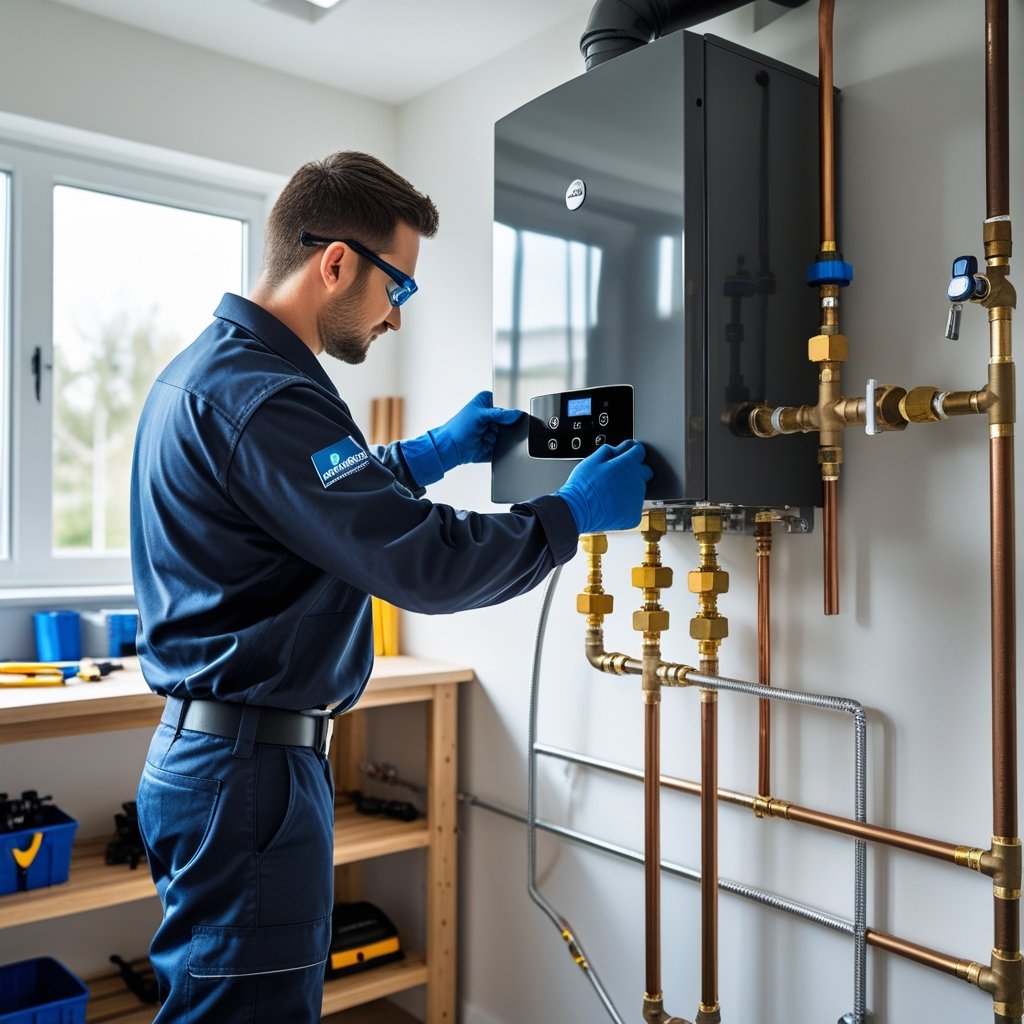Spring’s really the best time to get your HVAC system ready for the warmer days ahead. A simple spring HVAC checklist helps you catch little problems before they turn into big headaches—and keeps your home comfy and efficient. A few quick steps now can honestly save you a bunch of trouble later.
You’ll want to check things like air filters, outdoor units, and thermostat settings to keep things running smoothly. Leo Kob Co., serving South Central Pennsylvania since 1904, gets how important it is to keep your HVAC system in shape—without all the upselling.
Keep reading for a rundown of what to check and why it actually matters for your home.
Why Spring HVAC Maintenance Matters
Spring maintenance helps your HVAC system handle the coming heat. It keeps your equipment efficient and helps it last longer. Doing this stuff now can save you money and help you avoid breakdowns when you need cooling the most.
Benefits of Seasonal Maintenance
Regular spring maintenance stops small issues from turning into expensive repairs. When you check filters, clean coils, and test parts, your system works better and sticks around longer.
You’ll probably notice steadier temps and better airflow at home. That means less stress on your unit, so you’re less likely to need emergency repairs during a heatwave.
If you schedule seasonal checkups with a pro like Leo Kob Co., you get a head start on catching problems before they mess up your summer. Their technicians know how to spot the little stuff before it becomes a big deal.
Impact on Energy Efficiency
A well-maintained HVAC system just doesn’t have to work as hard to cool your house. Dirty filters or clogged coils make your unit struggle, and that can spike your electric bill.
Spring tune-ups clear out dust and debris, letting air move freely and helping your system run on less power. That means lower utility costs and less wasted energy.
Sometimes, keeping your system efficient even opens the door for rebates or incentives. Maintenance gives you a better shot at qualifying, which makes your investment go further.
Prolonging System Lifespan
Your HVAC system isn’t cheap. Taking care of it helps it last longer.
Spring’s a good time to check all the parts, tighten up connections, and refill refrigerant if it’s low. Doing this reduces stress on the system and prevents early breakdowns.
Keeping up with maintenance means fewer repairs and replacements down the road. That saves you from surprise bills and keeps your house comfortable. Leo Kob Co. even has service plans so you can keep track of everything without the pressure.
Essential Spring HVAC Checklist for Homeowners
To keep your HVAC running right, stick to three basics: replace dirty filters, set your thermostat, and test the system. These steps help with efficiency and comfort as things warm up.
Inspect and Replace Air Filters
Dirty air filters choke airflow and make your system work harder. Check them every 30 to 60 days in spring. If they’re gray or look clogged, swap them out.
Clean filters trap dust, pollen, and pet hair, so your air’s better and your system’s safer. Plus, you’ll save on energy bills.
Honestly, keep a few extra filters around so you’re not scrambling. If you have pets or allergies, you might want to change them even more often. It’s a tiny job that pays off.
Check Thermostat Settings
Spring’s perfect for reviewing your thermostat. Shoot for a temperature that balances comfort and savings—usually around 78°F when you’re home.
If you’ve got a programmable or smart thermostat, update your schedule for the warmer days. Set it higher when you’re out, lower when you’re back. No sense cooling an empty house.
Also, make sure the thermostat isn’t in direct sunlight or near heat sources. That way, it reads the room right and your system works like it should.
Test System Operation
Before it gets hot, turn on your HVAC to make sure it’s working. Listen for weird noises—rattles, grinding, anything odd. If you hear something, get a pro to check it.
Feel the air from all vents. Is it cool and even? Head outside and clear any leaves or grass from the condenser unit.
If the system won’t start or seems weak, call an expert. Catching issues now saves you from sweating it out later.
For honest service with no surprises, Leo Kob Co. offers quality HVAC maintenance in South Central Pennsylvania.
Cleaning and Safety Steps
Cleaning a few parts of your HVAC system can really help with airflow and safety. Focus on vents, outdoor areas, and check for leaks or damage. These quick steps keep things running longer and smoother.
Clean Vents and Registers
Vents and registers collect dust and dirt, blocking air and lowering efficiency. Use a vacuum with a brush to clean them inside and out.
Take off each register and wash it with warm, soapy water if it’s metal or plastic. Let it dry before putting it back. Change your filter during this cleaning so dust doesn’t just blow back in.
If you spot bent or damaged registers, replace them. Clean vents mean better air and lower bills.
Clear Outdoor Unit Debris
Your outdoor unit needs room to breathe. Clear away leaves, grass, and dirt within a couple feet of the unit. Use a soft brush or cloth to gently clean the fan blades.
Watch for plants or obstacles crowding the space and trim them back. Also, check the base for stability and clear any buildup.
A clean outdoor unit helps prevent overheating and keeps the system from straining. This step matters as spring rolls into summer.
Inspect for Leaks and Damage
Look over your HVAC pipes, ductwork, and the unit itself for leaks or cracks. Water stains, rust, or mold near connections might mean trouble. Fix small leaks quickly to avoid bigger headaches.
Check electrical wiring for frays or loose spots. If you see damaged wires or broken parts, call a pro from Leo Kob Co. or another trusted company.
Regular inspection keeps things safe and efficient. It also helps you avoid surprise breakdowns.
Indoor Comfort and Air Quality Tips
Keeping the air inside your home fresh and comfy means watching humidity, improving filtration, and checking your ducts. These steps help your HVAC work better and make your space healthier.
Assess Humidity Levels
Humidity plays a big role in comfort. Too high and things feel sticky—plus, you risk mold. Too low and you get dry skin and irritated sinuses.
Use a hygrometer to check moisture levels. Aim for 30% to 50% indoors. If it’s high, try a dehumidifier or boost ventilation. If it’s low, a humidifier helps.
Simple moves, like running exhaust fans in the bathroom or kitchen, can help balance things out. Leo Kob Co. can help you figure out the best humidity fixes during a spring tune-up.
Install or Replace Air Purifiers
Air purifiers grab dust, pollen, pet dander, and smoke—huge if you have allergies or asthma.
Pick one with a HEPA filter for the best results. Put purifiers in bedrooms and living spaces where you spend the most time.
Change those filters every 3 to 6 months. If your HVAC doesn’t have built-in purification, maybe ask about a whole-home air purifier next time you get service.
Ductwork Inspection
Ducts are the highways for your air. Leaks or blockages mess with comfort and cost you money.
Check visible ducts for holes, loose joints, or missing insulation. Uneven temps or lots of dust might mean your ducts need sealing or cleaning.
Having a pro clean and seal your ducts can boost airflow and air quality. Leo Kob Co. handles ductwork inspections and maintenance to help keep things efficient.
Professional Services vs. DIY Tasks
Knowing what you can handle and when to call in a pro saves time and cash. Some HVAC jobs are DIY-friendly, but others really need an expert.
When to Schedule Professional HVAC Inspection
Bring in a professional HVAC tech once a year for a full inspection. They’ll check for worn parts, leaks, and airflow issues. Pros spot things you might not—and help you dodge expensive breakdowns.
If your system’s over 10 years old, regular checkups matter even more. Technicians from Leo Kob Co. use special tools to test pressure and electrical stuff, making sure everything’s safe before summer.
Don’t mess with refrigerant or complicated wiring yourself. That’s pro territory. Booking in spring gives you peace of mind and usually helps with energy savings.
Tasks Homeowners Can Safely Perform
You can swap out HVAC filters every 1-3 months. It’s easy and helps with air quality and efficiency. Also, clear leaves and grass from around the outdoor unit to keep airflow steady.
Use a soft brush or vacuum to clean vents and registers. Make sure nothing’s blocking airflow. Check your thermostat batteries and settings too.
Don’t open the main unit or mess with electrical parts. If you hear weird noises, smell something strange, or see leaks, call a pro. Stick to the basics between professional visits and your system will thank you.
How to Create a Personalized Spring HVAC Checklist
Building a spring HVAC checklist for your home keeps things running right. Focus on your system type and keep track of any work you’ve done. That way, your checklist actually fits your needs.
Customizing for Your System Type
Every HVAC setup is a little different. Got a mini-split system? Check refrigerant and clean both units. For a heat pump, look at defrost cycles and test the thermostat. Oil furnaces need chimney and burner cleaning, and electric systems benefit from checking wiring.
List the tasks that fit your model. Add easy jobs like changing filters, and leave the tricky stuff for a pro. Customizing your checklist keeps you focused and saves time.
Tracking Maintenance Records
Keep all your service dates and what was done in one place. Use a notebook, spreadsheet, or even an app. Note filter changes, repairs, and inspections. Tracking helps you spot patterns and catch problems early.
If you ever call Leo Kob Co. or another tech, sharing your maintenance history makes things smoother and avoids repeat work. Staying organized means fewer surprises and a longer-lasting system.
Preventing Common Spring HVAC Problems
Spring can bring new problems if you’re not paying attention. Catching issues early and doing some basic prevention helps your system run better all season.
Recognizing Early Warning Signs
Listen for weird sounds—rattles, grinding, anything off. Usually, that means something’s loose or wearing out.
Check for weak airflow or uneven temps from room to room. That could be a clogged filter or blocked duct.
Look out for water leaks or moisture near your unit. Water can ruin parts and cause rust.
If your energy bill suddenly jumps, your system might be working too hard. Keep an eye on your thermostat and clean those filters regularly.
Avoiding Costly Repairs
Book a professional tune-up with someone like Leo Kob Co. every spring to check and clean your system.
Replace air filters every 1-3 months to keep air moving and reduce strain.
Clear debris from around the outdoor unit for better efficiency and fewer problems.
If your system’s older, maybe look into upgrades like mini-splits or heat pumps for better energy savings and reliability.
A little maintenance now can save you big money and extend the life of your HVAC.
Energy-Saving Strategies for Spring
Cutting energy use in spring is all about changing a few habits and using tech to help your HVAC work smarter. Even small tweaks can lower your bills and keep your home comfortable as the weather shifts.
Adjusting Usage Habits
Spring weather keeps you guessing, so how you use your HVAC can really make a difference. Try nudging your thermostat up a few degrees on warm days—you might not even notice, but your AC sure will. At night, if it’s cool enough, skip the cooling altogether and just crack a window or turn on a fan for some fresh air.
Closing blinds or curtains when the sun’s blazing in? That’s a simple move, but it helps a lot. Less sunlight means your place doesn’t heat up as fast, so your AC gets a break.
Don’t forget about your air filters. When they’re dirty, the system has to work way too hard. Leo Kob Co. says just check them every month in spring. If they look grungy, swap them out.
Leveraging Smart Thermostats
Smart thermostats are pretty clever. They pick up on your habits and tweak the temperature for you, which saves energy without you really thinking about it. You can set them to cool things down only when you’re actually home, so you’re not wasting electricity.
Most of these gadgets let you use your phone to control them. Handy if you’re out and plans change—no need to cool an empty house.
They’ll even show you reports about your energy use. Sometimes those little graphs are eye-opening. Upgrading to a smart thermostat usually isn’t too pricey, and it should work with whatever HVAC setup you already have.
Wrapping Up Your Spring HVAC Checklist
Once you’ve looked over your HVAC this spring, don’t just forget about it. Staying on top of the basics—like swapping filters and keeping debris away from outdoor units—keeps things running smoother.
Hear weird noises or notice rooms aren’t cooling evenly? Probably time to call in a pro. Leo Kob Co. covers South Central Pennsylvania and, honestly, we just focus on straightforward, fair service. No tricks.
Here’s a quick list for your spring checklist:
- Replace or clean filters every 1-3 months
- Clear leaves or grass from outdoor units
- Check your thermostat’s batteries
- Book a professional tune-up if you haven’t yet
A little maintenance now usually means fewer headaches (and bills) later.
If you’re in Harrisburg, Lancaster, or York, you might want to check out Leo Kob Co.’s HVAC maintenance plans. Perks like priority scheduling and repair discounts can take a load off your mind.
Give us a call to set up your spring tune-up. Let’s make sure your HVAC is ready for whatever this spring throws at you.
Frequently Asked Questions
Taking care of your HVAC in spring? It’s all about filters, cleaning, and a quick tune-up. Catching little problems early just makes life easier down the road.
What maintenance tasks should I do on my HVAC system this spring?
Change the filters, clean the outdoor unit, clear away debris, and double-check your thermostat settings. Take a peek at your ducts and vents for dust, too.
How often does my air conditioner need a professional tune-up?
Once a year’s the sweet spot—ideally right before you start using it in spring. Keeps things humming and helps you spot trouble before it gets expensive. Leo Kob Co. does reliable tune-ups all over South Central PA.
Can you give me some tips for improving my HVAC efficiency as the weather gets warmer?
Keep doors and windows shut when the AC’s on. Use fans to move air around. Seal up any leaks to keep the cool air inside. And yeah, don’t skip those filter changes.
Are there specific parts of my HVAC system I should pay extra attention to this spring?
Definitely. Focus on your air filter, condenser coils, and the outdoor fan. Look for dirt, damage, or anything blocking vents. Check drain lines for clogs or leaks while you’re at it.
What's the best way to change my HVAC filters, and how often should I do it?
Turn off the system, pull out the old filter, and pop in a fresh one that fits. Do this every 1-3 months, depending on how much you’re running the system and your home’s air quality.
How can I identify potential issues in my HVAC system before they become bigger problems?
Keep an ear out for odd noises or notice if the airflow feels weaker than usual. Maybe some rooms just aren’t cooling like they should, or your energy bill suddenly jumps for no clear reason. Glance around the unit for any unexpected water leaks. Honestly, just poking around and doing regular tune-ups can help you spot these things before they turn into headaches.

